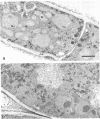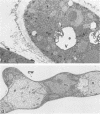Abstract
Evaluation of caffeine and a number of related methylxanthines indicated that the ability of the compound to inhibit growth and aflatoxin production by Aspergillus parasiticus is highly specific and does not involve an inhibition of cyclic AMP phosphodiesterase. Supplementation of the culture medium with purine bases, nucleosides, and nucleotides suggested that the inhibition of fungal growth could be partially overcome by adenine or guanine but that the purines had little effect on the inhibition of aflatoxin production. Likewise, increasing the levels of trace minerals did not overcome the inhibition of toxin production. Electron microscopic evaluation of caffeine-treated and -untreated cultures indicated that the compound produced observable changes in the ultrastructure of the fungus.
Full text
PDF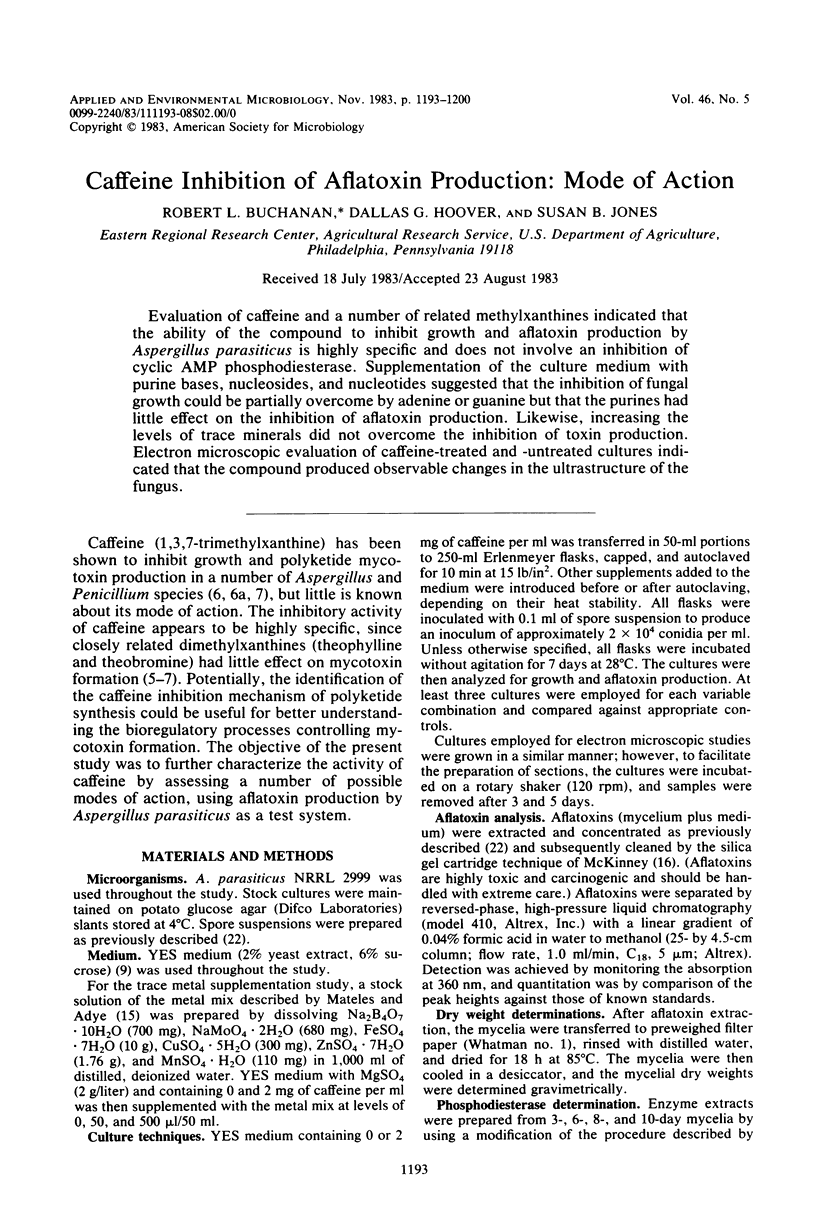
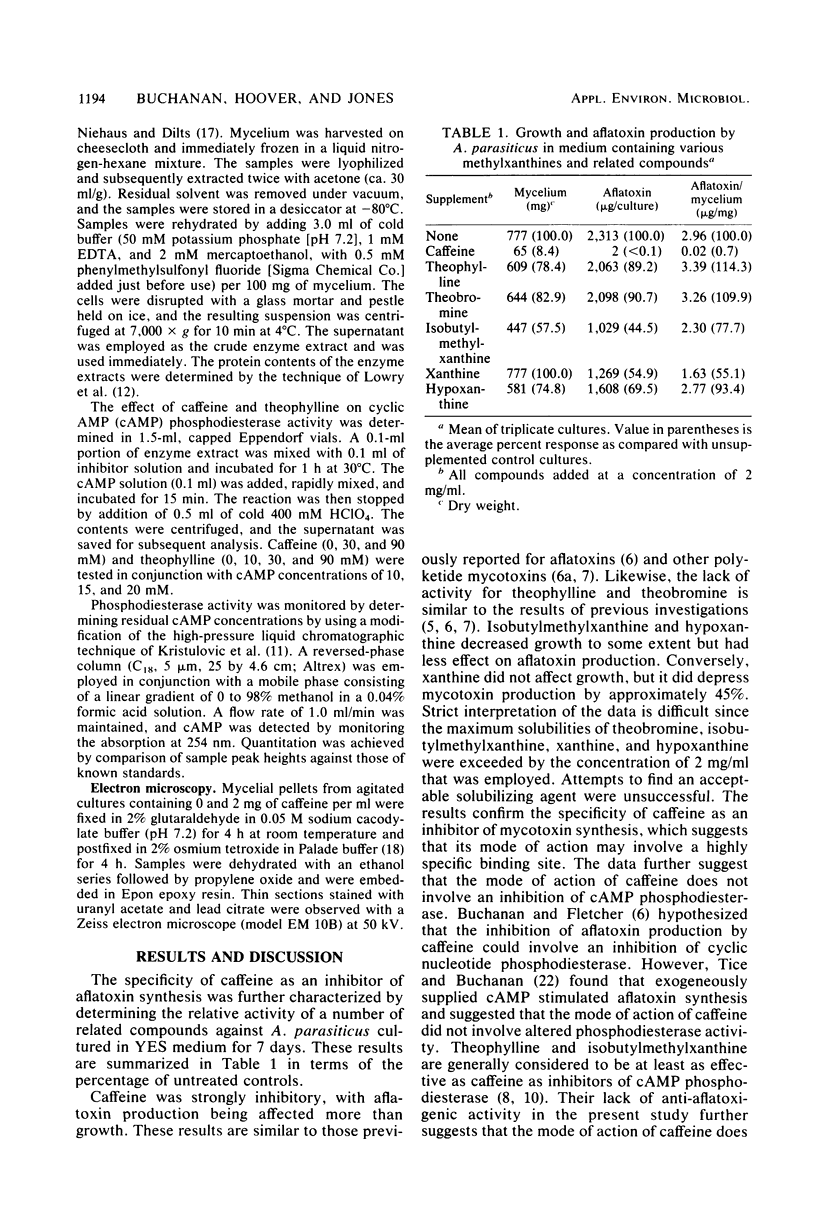
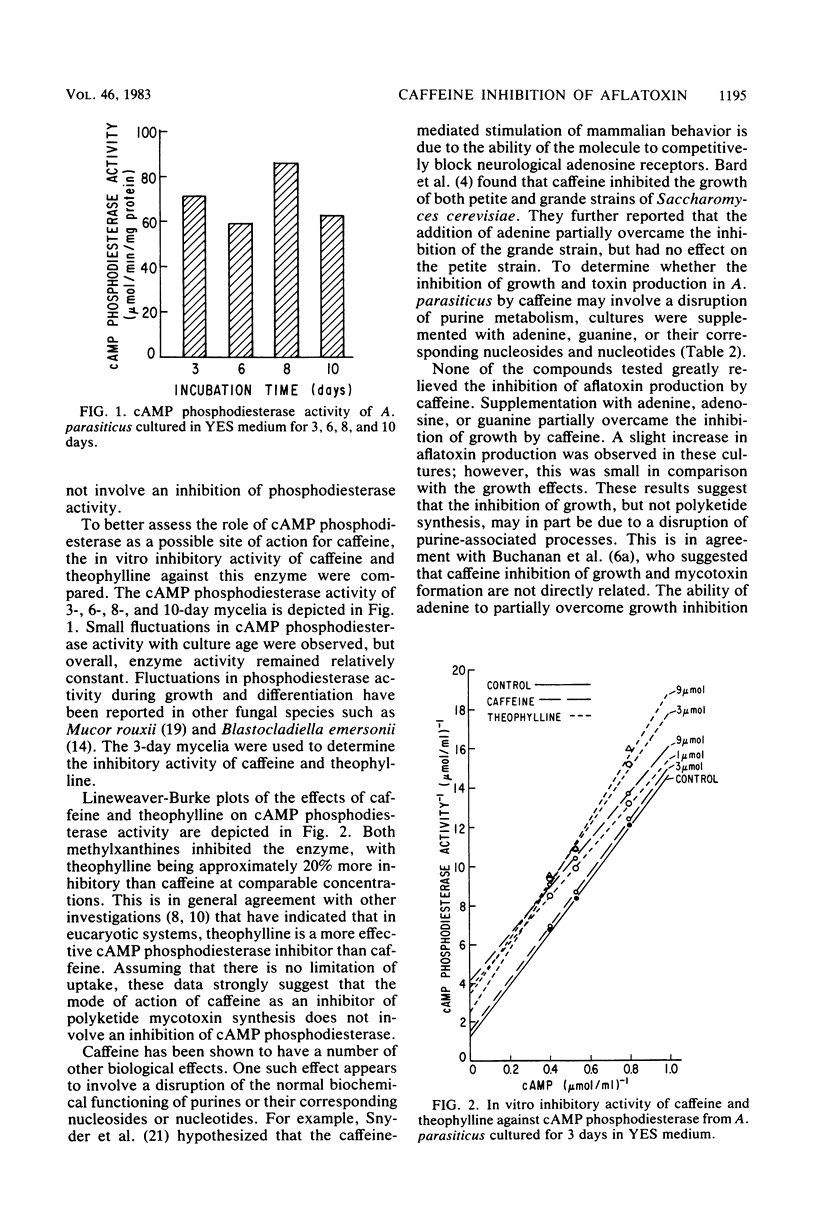
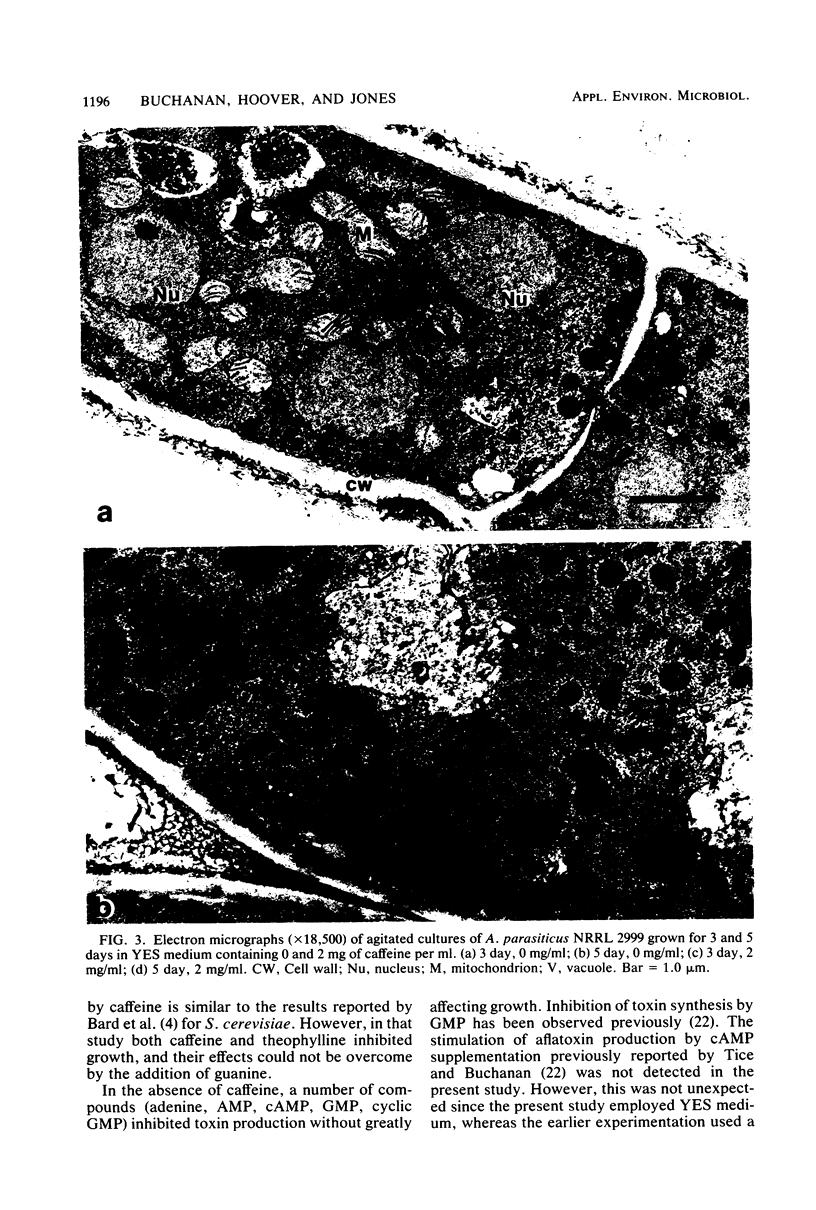
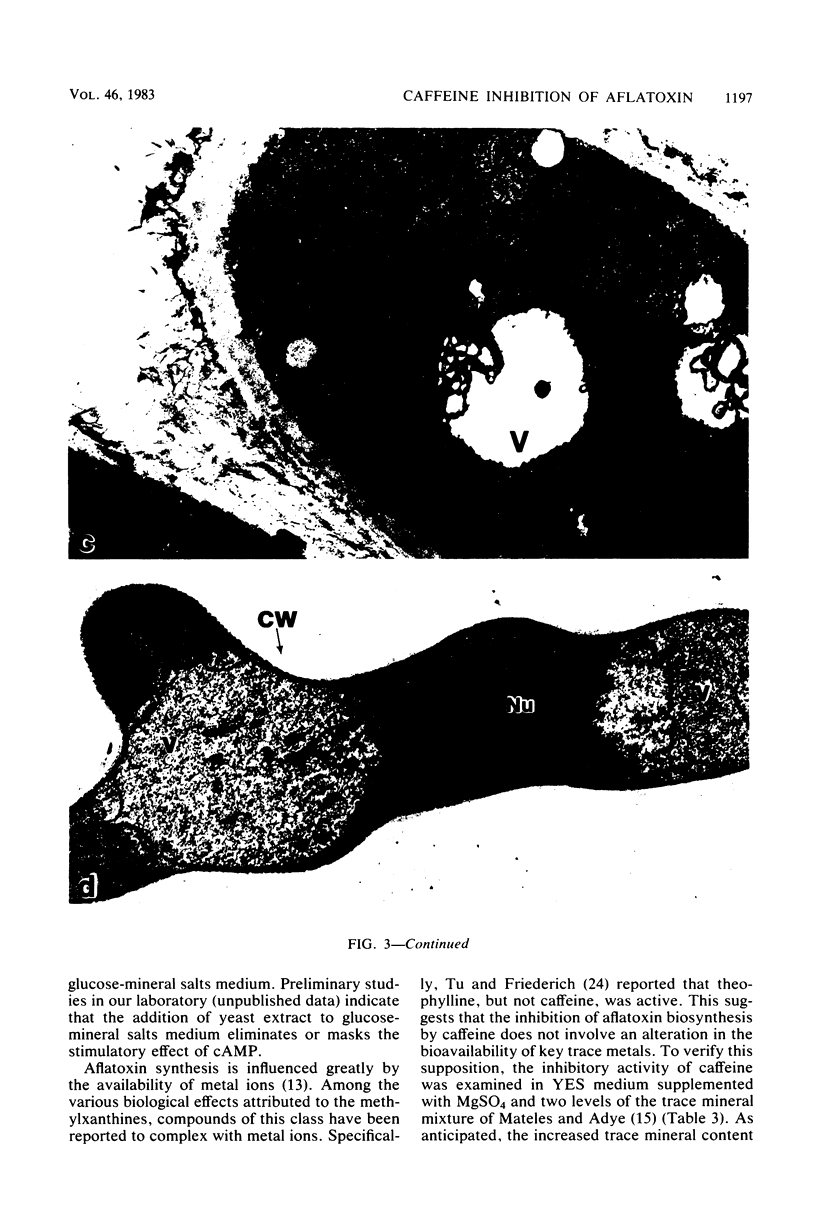
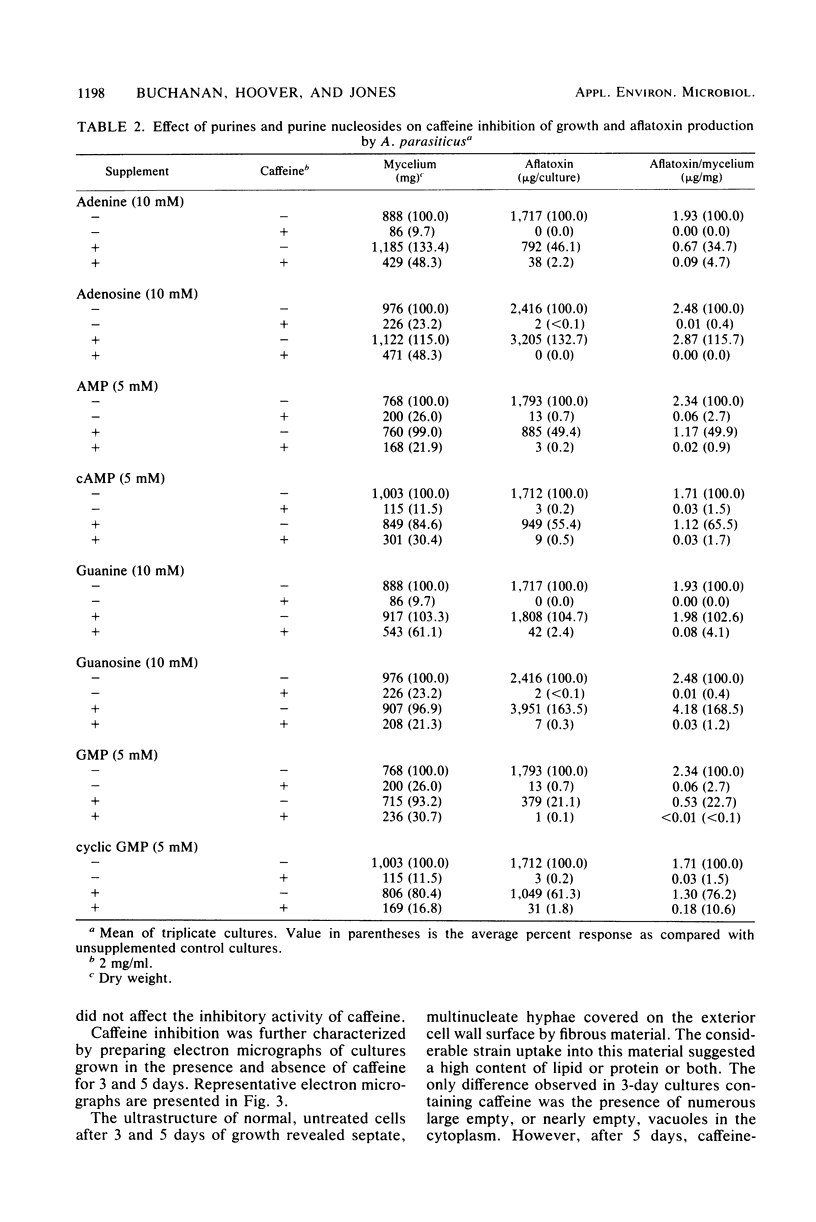
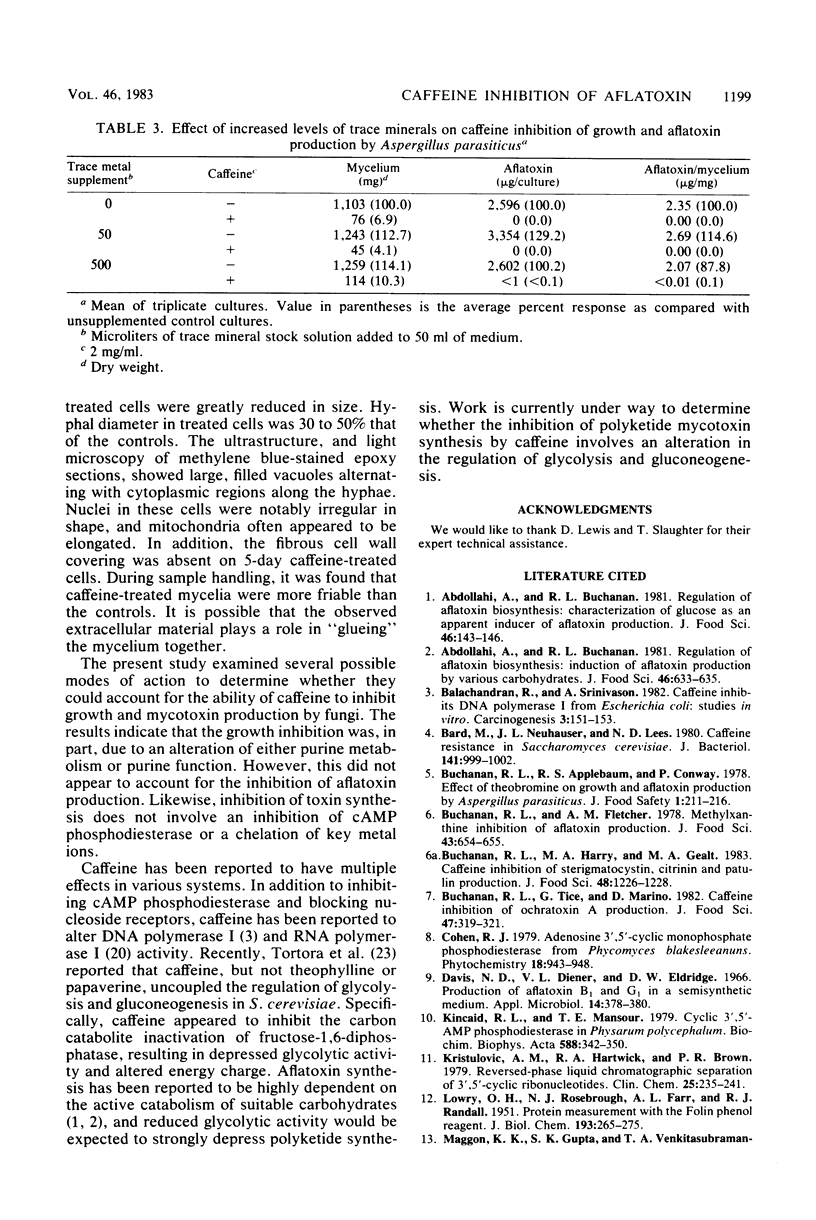
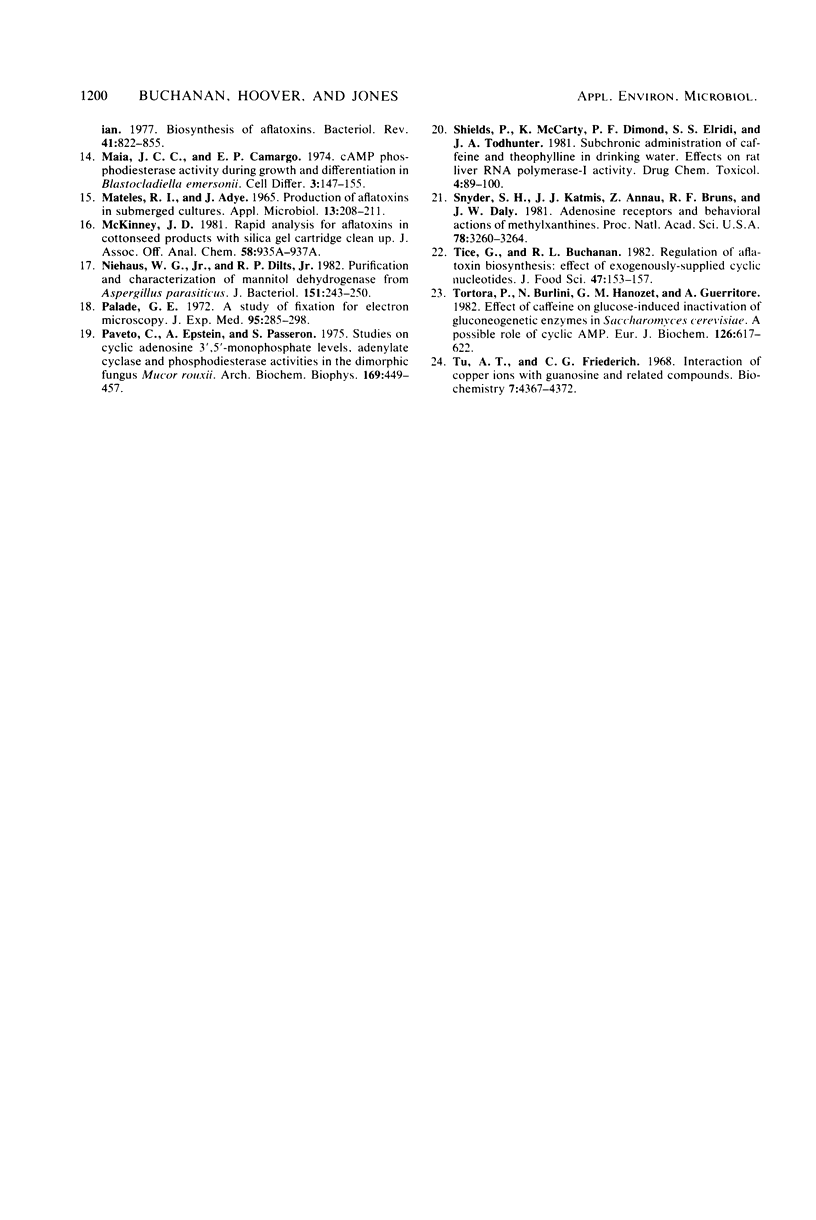
Images in this article
Selected References
These references are in PubMed. This may not be the complete list of references from this article.
- Balachandran R., Srinivasan A. Caffeine inhibits DNA polymerase I from Escherichia coli: studies in vitro. Carcinogenesis. 1982;3(2):151–153. doi: 10.1093/carcin/3.2.151. [DOI] [PubMed] [Google Scholar]
- Bard M., Neuhauser J. L., Lees N. D. Caffeine resistance of Saccharomyces cerevisiae. J Bacteriol. 1980 Feb;141(2):999–1002. doi: 10.1128/jb.141.2.999-1002.1980. [DOI] [PMC free article] [PubMed] [Google Scholar]
- Davis N. D., Diener U. L., Eldridge D. W. Production of aflatoxins B1 and G1 by Aspergillus flavus in a semisynthetic medium. Appl Microbiol. 1966 May;14(3):378–380. doi: 10.1128/am.14.3.378-380.1966. [DOI] [PMC free article] [PubMed] [Google Scholar]
- Kincaid R. L., Mansour T. E. Cyclic 3',5'AMP phosphodiesterase in Physarum polycephalum. II. Kinetic properties. Biochim Biophys Acta. 1979 Dec 11;588(3):342–350. doi: 10.1016/0304-4165(79)90342-8. [DOI] [PubMed] [Google Scholar]
- Krstulovic A. M., Hartwick R. A., Brown P. R. Reversed-phase liquid chromatographic separation of 3',5'-cyclic ribonucleotides. Clin Chem. 1979 Feb;25(2):235–241. [PubMed] [Google Scholar]
- LOWRY O. H., ROSEBROUGH N. J., FARR A. L., RANDALL R. J. Protein measurement with the Folin phenol reagent. J Biol Chem. 1951 Nov;193(1):265–275. [PubMed] [Google Scholar]
- MATELES R. I., ADYE J. C. PRODUCTION OF AFLATOXINS IN SUBMERGED CULTURE. Appl Microbiol. 1965 Mar;13:208–211. doi: 10.1128/am.13.2.208-211.1965. [DOI] [PMC free article] [PubMed] [Google Scholar]
- Maia J. C., Camargo E. P. c-AMP phosphodiesterase activity during growth and differentiation in Blastocladiella emersonii. Cell Differ. 1974 Sep;3(3):147–155. doi: 10.1016/0045-6039(74)90026-8. [DOI] [PubMed] [Google Scholar]
- Niehaus W. G., Jr, Dilts R. P., Jr Purification and characterization of mannitol dehydrogenase from Aspergillus parasiticus. J Bacteriol. 1982 Jul;151(1):243–250. doi: 10.1128/jb.151.1.243-250.1982. [DOI] [PMC free article] [PubMed] [Google Scholar]
- PALADE G. E. A study of fixation for electron microscopy. J Exp Med. 1952 Mar;95(3):285–298. doi: 10.1084/jem.95.3.285. [DOI] [PMC free article] [PubMed] [Google Scholar]
- Paveto C., Epstein A., Passeron S. Studies on cyclic adenosine 3' ,5'-monophosphate levels, Adenylate cyclase and phosphodiesterase activities in the dimorphic fungus Mucor rouxii. Arch Biochem Biophys. 1975 Aug;169(2):449–457. doi: 10.1016/0003-9861(75)90187-3. [DOI] [PubMed] [Google Scholar]
- Shields P., McCarty K., Dimond P. F., Elridi S. S., Todhunter J. A. Subchronic administration of caffeine and theophylline in drinking water: effects on rat liver RNA polymerase I activity. Drug Chem Toxicol. 1981;4(2):89–100. doi: 10.3109/01480548108998252. [DOI] [PubMed] [Google Scholar]
- Snyder S. H., Katims J. J., Annau Z., Bruns R. F., Daly J. W. Adenosine receptors and behavioral actions of methylxanthines. Proc Natl Acad Sci U S A. 1981 May;78(5):3260–3264. doi: 10.1073/pnas.78.5.3260. [DOI] [PMC free article] [PubMed] [Google Scholar]
- Tortora P., Burlini N., Hanozet G. M., Guerritore A. Effect of caffeine on glucose-induced inactivation of gluconeogenetic enzymes in Saccharomyces cerevisiae. A possible role of cyclic AMP. Eur J Biochem. 1982 Sep 1;126(3):617–622. doi: 10.1111/j.1432-1033.1982.tb06825.x. [DOI] [PubMed] [Google Scholar]
- Tu A. T., Friederich C. G. Interaction of copper ion with guanosine and related compounds. Biochemistry. 1968 Dec;7(12):4367–4372. doi: 10.1021/bi00852a032. [DOI] [PubMed] [Google Scholar]



